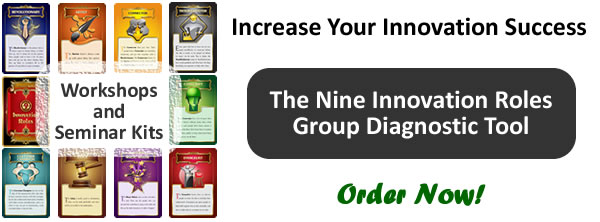 Picking up where my hugely popular article ‘Rise of the Social Business Architect‘ (PDF) leaves off, I thought I would examine the world of web design in a world where the tools of social media are becoming increasingly important and integrated into how business gets done (and even how searching and search results are done).
Picking up where my hugely popular article ‘Rise of the Social Business Architect‘ (PDF) leaves off, I thought I would examine the world of web design in a world where the tools of social media are becoming increasingly important and integrated into how business gets done (and even how searching and search results are done).
When it comes to putting up a web site, most entrepreneurs and marketers unfortunately look at it from their perspective (what do I want to say?) instead of from their potential customers’ perspective (what do they want or need to know?). This causes most entrepreneurs and marketers to start building web sites for their new product or service in the same basic way (a push marketing approach).
First, they go out and hire a web designer to build them a web site, only to have the web designer ask them three main questions:
1. What kind of visual design are you looking for? (…and what are your favorite web sites and why?)
2. Do you need the web site to run on any particular technology platform?
3. What kinds of content do you have? (…and what is your menu structure going to be?)
The third question often provokes a deer in the headlights kind of response – “Oh shoot, we have to write something” – and then after the entrepreneur or marketer recovers from the shock they think about what they want to say.
The entrepreneur or marketer hastily runs off and sketches out a set of pages that they want to have (or they use another site as a template) and then they write (or hire someone to write) copy for each page, and when the copy is written and the design is complete they have someone build the web site using the design and content as a guide.
The end result is a web site that stands alone as a new domain in the digital wilderness, disconnected from the rest of the digital world. This may be great for putting on business cards and email signatures, but the chances are low of someone finding the new web site and actually caring about the product or service.
Frustrated that nobody is coming to the new web site, maybe the marketer or entrepreneur creates a Facebook page or a Twitter account, but then those likely sit there – lacking a clear purpose or a point of conversation.
Still trying to provoke activity on their web site, maybe the marketer/entrepreneur starts to create deeper level content that their potential customers might actually care about, with the potential of moving them along the customer purchasing journey, and put it on the site. When few people find the new content that the marketer/entrepreneur created at great time and/or expense, maybe they buy some pay-per-click advertising (PPC) to drive people to it, wondering when the financial bleeding will stop.
Finally, maybe they place the content off-site in places where potential customers actually gather and might find it (and find the new web site as a result).
What would happen if you flipped the traditional push marketing web design paradigm around and used a pull marketing approach instead?
I would contend that is exactly what you should do if you want to build a social business, and to prove it, over the next couple of months I will flip the traditional web site design model on its and head and use an upside down social web design model for my new domain in the wilderness – http://b2bpull.com – which will be the home of a new digital agency focused on b2b pull marketing strategy and execution services.
So what does an upside down social web design approach look like?
Well, the first key is to keep the customer at the center of your plans, not the product or service you plan to offer. My current web site – https://bradenkelley.com – is all about me – my thinking, my services, my creations, etc. I am the product, and I sit at the center. The web site in this evolving case study – http://b2bpull.com – will be built with b2b marketing managers at the center, and now I’ll lay out what the steps in a pull marketing approach to social web site design should be.
Blackjack!
Here are the 21 steps to building an Upside Down Social Web Design:
- While you are exploring what product or service to offer to potential customers, also explore how they shop for the kind of product or service you are going to offer. Seek to understand where their areas of confusion are, and what kinds of information they seek out to help them make the decisions about which companies to consider and which products or services they are interested in learning more about.
- Create a simple landing page that tells people what is coming soon, and that contains a simple form asking people what they’d like to know more about. If you go to http://b2bpull.com now you will find not a web site, but a landing page asking people what they’d like to know about b2b pull marketing. So, please let me know what you’d like to know about using content to drive an increase in inbound sales leads, and I’ll work to build answers to share with the world.
- Create a simple logo (you can change this later) that is a square image (this is for use as a profile photo in any profiles you create – i.e. Twitter/Facebook)
- If your prospective customers are on Twitter, then create an account on Twitter – if they are not, then skip this step. At a minimum, populate your profile with a description of your product or service, a profile image, the URL of your landing page, and a background image to make your profile more visually engaging and distinctive. Send a tweet or two letting people know what you’re planning to do and inquiring what people would like to know more about (as it relates to your specialty area). Do research to find out who else tweets interesting things about your specialty and start following them. Retweet one or two interesting things that they share (every day) – be sure and use appropriate #hashtags in your re-tweets to help people find them.
- If your prospective customers are on Facebook, then create a Facebook page and at a minimum populate it with a profile photo, a cover image, and an about us. If your prospective customers do not spend time on Facebook, then skip this step. Add links to the one or two interesting things that you find on Twitter each day that relate to your specialty area. That will start giving you some interesting content on your Facebook page (instead of it staying blank), feed it into your fans’ Facebook content streams, and give people an idea of what to expect in the future.
- Look for interesting groups on Linkedin that focus on your specialty area and join them. Consider starting your own Linkedin group. See what people are sharing in the groups you join. Consider sharing some of what you find on Twitter in the discussions area of the groups that you join (or create) to add value.
- Scour the web for sites and blogs in your specialty area that are ideally independent of any one company, publish interesting content, and have multiple contributing authors. Ask your friends and network connections in your specialty area for recommendations too. Use Alexa, Compete, and other tools to identify which of the sites get the most traffic.
- Refer to your research in step #1 to identify which topics in your specialty area that customers look for information on the most to help them further their progress along their purchasing journey. Hopefully one or more of these topics you will have deep knowledge and expertise on. Commit to writing a white paper on one of these topics.
- See if one or more of the sites in step #7 will allow you publish an article announcing your research effort for this white paper on their web site in order to build interest and hopefully participation in this effort.
- Write the white paper (ideally with contributions from current or prospective customers), and when complete, create one or more articles for digital publication from each white paper.

- Add another simple form to your landing page for people to fill out with name/company/title/email/phone in order to download the white paper (make phone optional) and ask their permission (with a check box) to send them information about an upcoming webinar to discuss its findings.
- Create an electronic presentation to share the findings of the white paper you’ve created. Be sure to embed contact details in it and a link to your landing page (which will become your web site later).
- Create accounts on presentation sharing sites like Slideshare and Scribd and share the presentation you’ve created. Be sure that you fill out your profile on these sites and include a link to your landing page as part of your profile if possible.
- Inquire with the most promising sites identified in step #7 to find out if they accept article submissions and submit one or more of the articles you created from your white paper.
- Identify short snippets from the white paper and articles that work well as quotes or insights and will fit into status updates on Twitter, Facebook, Linkedin, Google+, or other communities where it makes sense to share them. Be sure and include a shortened url (bit.ly, su.pr, ow.ly, etc.) to the article, presentation, or white paper.
- Look for professional associations and complimentary vendors in your specialty area that conduct regular webinars and ask if they would be interested in doing a webinar with you to share the findings of your white paper with their members or current/prospective customers. If you do a webinar, be sure that they record the webinar and share the link with you to the recording (and hopefully the email list of attendees). Check to see if they can provide a recording of the webinar in a video format that you can share. If you can’t find someone to do a webinar with to share your findings, consider doing one yourself. While having a large number of people attend live is helpful, what is more important here is the recording (you can help potential customers find this 24/7/365).
- Add the link to the webinar recording to your landing page.
- Create an account on YouTube and possibly also on Vimeo and populate your profile in a similar manner to Twitter (not neglecting to link to relevant assets). Upload the video file from the webinar (if you were able to get one), plus add it to your Facebook page if you’ve created one. If you are comfortable in front of the camera, consider recording a separate video segment highlighting the key findings from your white paper to upload to your video channels.
- Be sure and share links to the white paper, the webinar, the webinar recording, and any articles you created from the white paper through your Twitter, Facebook, Linkedin, and any other communities linked to your subject matter.
- Repeat as many times as necessary until you have enough content to build your web site.
- Last but not least, design and build your web site, incorporating all of the content elements that you created. Not only will it be easier to build the web site because you have already built a lot of the content required to populate any design your web designer might come up with, but the quality of your web design may improve and be more social because the designer will have a clearer idea of what you are selling and the goals you are trying to achieve with your new web site.
The importance of social media in the internet ecosystem is only continuing to grow, and so it is time to design web sites in a different, more social way. The way that people buy things, especially more complicated products and services with longer cycles (particularly B2B products) is changing as well. This will make marketing organizations focus more on pull marketing and less on push marketing. This will force marketers and entrepreneurs to focus less on building beautiful, flash-driven web designs and more on building valuable, socially-driven, content-rich ecosystems (of which the web site is only a part).
In short, the future of marketing belongs to marketers who are good at creating social pull.
So, how strong is your social pull?

 Sign up here to get Human-Centered Change & Innovation Weekly delivered to your inbox every week.
Sign up here to get Human-Centered Change & Innovation Weekly delivered to your inbox every week.


![]() Sign up here to get Human-Centered Change & Innovation Weekly delivered to your inbox every week.
Sign up here to get Human-Centered Change & Innovation Weekly delivered to your inbox every week.
 Picking up where my hugely popular article ‘
Picking up where my hugely popular article ‘
